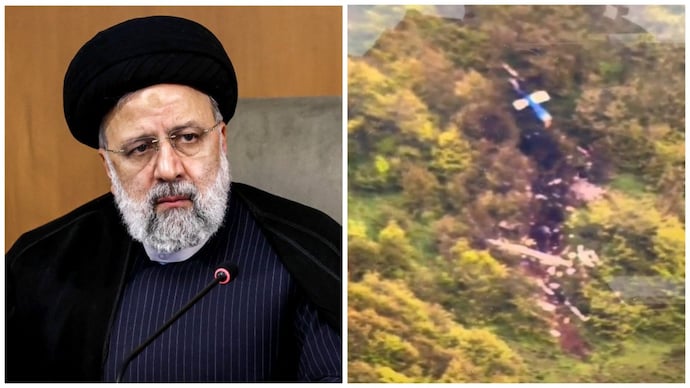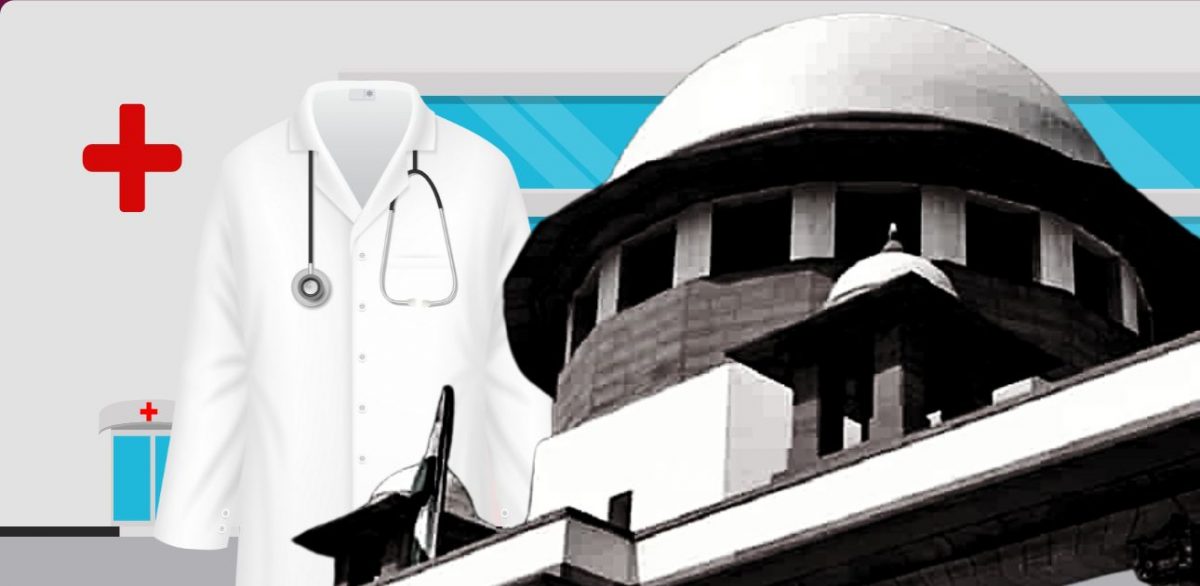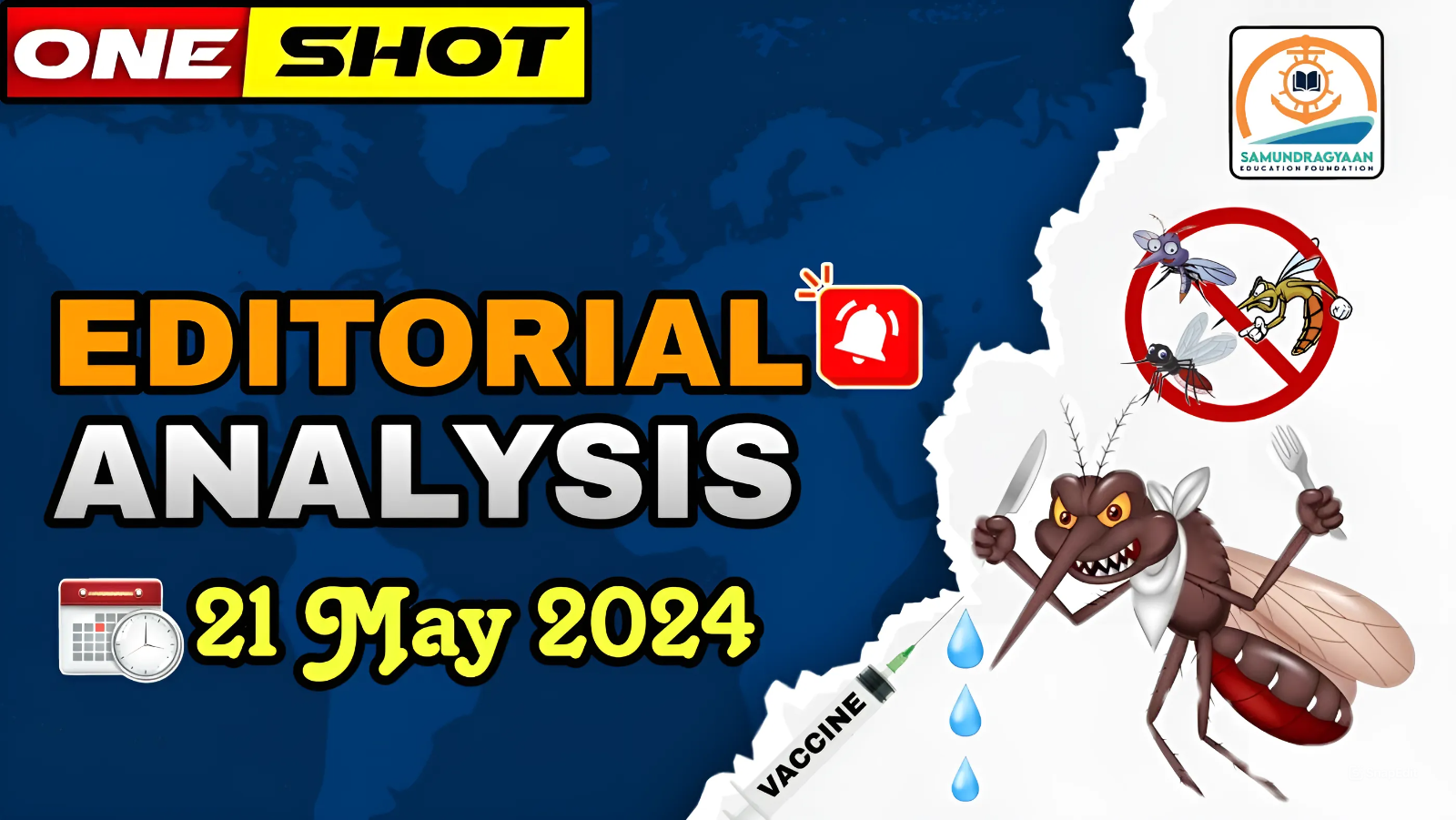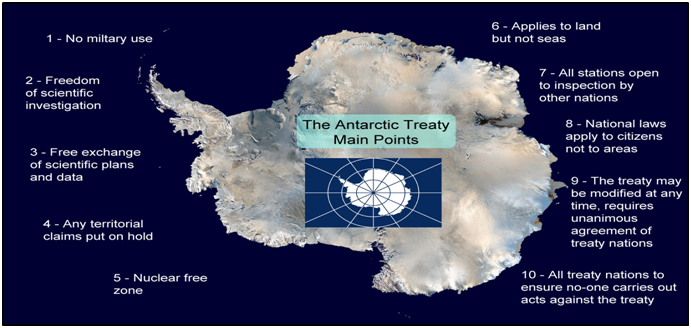Editorials & Articles : 21 May 2024

Why in news?
- Iran’s President Ebrahim Raisi, along with country’s foreign minister and several other officials were found dead hours after their helicopter crashed in the country’s northwest.
- Iran’s Supreme Leader Ayatollah Ali Khamenei said that First Vice President Mohammad Mokhber would take over as interim president.
What’s in today’s article?
- Authority of the President in Iran
- Ramifications of Raisi’s death in Iran
- India’s concern
- India’s response after President’s death
Authority of the President in Iran
- Role of President
- Iran’s President works under the authority of the Supreme Leader but is still a powerful figure in Iran’s political system.
- The President mediates between the legislature and the executive, and appoints ministers and vice presidents.
- The President also makes key foreign policy decisions. Then President Hassan Rouhani acted with significant authority during the JCPOA negotiations.
- The Joint Comprehensive Plan of Action (JCPOA), also known as the Iran nuclear deal, is an agreement signed in July 2015 between Iran and the P5+1.
- The agreement limits Iran’s nuclear program in exchange for sanctions relief.
- The Iranian President’s authority is superseded only in the event of a clash between him and the Supreme Leader.
- Major achievements of Ibrahim Raisi as a President
- Iran-Saudi deal, brokered by China.
- Raised the pitch for an ‘Axis of Resistance’,
- It is an informal, Iran-led political-military coalition comprising the Islamic resistance in Iraq, the Syrian government, the Lebanese Hezbollah, Yemeni Houthis, and Palestinian groups including Hamas.
Ramifications of Raisi’s death in Iran
- Conservatives Vs. reformists
- Since the Islamic Revolution of 1979, Iran’s politics has developed between two poles.
- On the one side are the conservatives who want to strictly follow the principles of Twelver Shi’ism, the state religion.
- They aim to enforce its religious codes throughout society. They view the Revolution as a strong stance against Western imperialism.
- They have significant support, especially from the poorer sections of the population.
- On the other side are the so-called ‘reformists’ who, while remaining loyal to the Revolution, want more flexibility both in domestic and international matters.
- For instance, they support greater rights for women, strengthening civil society and human rights.
- They also want free elections and more conciliatory relations with the West.
- The untimely death of Raisi will result in increased tussle between conservatives and reformists.
- President Raisi was considered to be a hardline cleric, had been seen as the likely successor to Iran’s Supreme Leader, Ayatollah Ali Khamenei.
- On succession
- According to Iran’s Constitution, the First Vice President takes over in case the President dies or is incapacitated.
- There are several appointed Vice Presidents in Iran, who serve in the Iranian Cabinet.
- The office of the First Vice President is considered to be the first among equals.
- This is Mohammad Mokhber, who was appointed by President Raisi to the post in August 2021.
- He will serve as President until an election to the post of President can be held, which must happen within the next 50 days.
- According to Iran’s Constitution, the First Vice President takes over in case the President dies or is incapacitated.
India’s concern
- Iran as part of its extended neighbourhood
- India, which considers Iran to be part of its extended neighbourhood, has been watching Iran’s dynamics in the region quite closely and cautiously.
- The assessment in Delhi is that the supreme leader Ali Khamenei being the most powerful player in the Iranian establishment is around.
- Hence, the death of President Raisi will not create a political vacuum.
- Iran’s response after the war in Gaza
- Iran’s response after the war in Gaza was a direct attack on Israel in April 2024,
- Israeli attack on Iran’s consulate in Syria which killed a top Iranian military officer
- Israel being a close friend of India, India will be keenly watching the political development in Iran after Rais’s death.
- Iran’s response after the war in Gaza was a direct attack on Israel in April 2024,
- Iran’s active support to some of the regional groups during Raisi’s regime
- Iran’s active support to some of the regional groups, often referred to as the 3Hs — Hezbollah, Houthis and the Hamas — is seen to have impacted the peace and stability in the region.
- While Hezbollah has kept Israel busy on the northern border, the Houthis attacks on the ships passing through the Red Sea had disrupted the shipping sea routes for maritime trade.
- India was actively engaging with Raisi’s regime
- In August 2023, Prime Minister Narendra Modi met with President Raisi in Johannesburg on the sidelines of the BRICS Summit.
- As a result, both the countries signed a long-term contract on Chabahar Port in May 2024.
- External Affairs minister S Jaishankar had also engaged with Iranian Foreign Amir, that had been key to securing Indian interests.
- The latest one being the release of Indian sailors who were on board a ship that was seized by the Iranian navy.
- In August 2023, Prime Minister Narendra Modi met with President Raisi in Johannesburg on the sidelines of the BRICS Summit.
- Various agreements between both the countries
- The two countries had signed a friendship treaty on March 15, 1950, and the visit of PM Vajpayee to Iran and the signing of the Tehran Declaration in April 2001.
- However, the relationship was hampered by Delhi’s proximity to the US, signing of the Indo-US nuclear deal, and Iran’s nuclear programme faced sanctions.
- India has not been able to buy oil since 2018, and managed to get a waiver on the Chabahar port citing access to Afghanistan as the key reason.
India’s response after President’s death
- PM Modi expressed grief over the death of Iranian President Ebrahim Raisi.
- A one-day state mourning will be observed across India on May 21 as a mark of respect for the Iranian President.
Why in News?
- The Ministry of Earth Sciences (MoES) through the National Centre for Polar and Ocean Research (NCPOR) is hosting the ATCM 46 from May 20 to 30, 2024, in Kochi, Kerala.
- Kochi will also host the 26th Meeting of the Committee for Environmental Protection (CEP 26).
- This is consistent with India’s ability to foster positive international discourse on scientific cooperation, environmental responsibility and Antarctica cooperation.
What’s in Today’s Article?
- What is the Antarctic Treaty?
- What is ATCM and CEP under the Antarctic Treaty?
- Key Items on the ATCM 46 and CEP 26 Agenda
- India’s Presence in the Antarctic
- Significance of Hosting ATCM 46 and Challenges for India
What is the Antarctic Treaty?
- The Antarctic Treaty was signed in Washington on 1 December 1959 by the twelve countries whose scientists had been active in and around Antarctica during the International Geophysical Year (IGY) of 1957-58.
- The 12 original signatories were – Argentina, Australia, Belgium, Chile, France, Japan, New Zealand, Norway, South Africa, the Soviet Union, the UK, and the US.
- It entered into force in 1961 and has since been acceded to by many other nations, taking the total number of Parties to the Treaty to 56 now.
- There are two types of parties to the Antarctic Treaty – Consultative (29) and non-Consultative (27).
- The latter are invited to attend the Consultative Meetings but do not participate in the decision-making.
- India has been a Consultative Party (those demonstrate their interest in Antarctica by conducting substantial research activity there) to the Antarctic Treaty since 1983.
What is ATCM and CEP under the Antarctic Treaty?
- Antarctic Treaty Consultative Meeting (ATCM):
- Convened annually, these meetings serve as forums for Antarctic Treaty Consultative Parties and other stakeholders to address Antarctica’s pressing environmental, scientific, and governance issues.
- From 1961 to 1994 the ATCM generally met once every two years, but since 1994 the meetings have occurred annually.
- The ATCM is hosted by the Consultative Parties according to the alphabetical order of their English names.
- Committee for Environmental Protection (CEP):
- The CEP was established under the Protocol on Environmental Protection to the Antarctic Treaty (the Madrid Protocol) in 1991.
- The CEP advises the ATCM on environmental protection and conservation in Antarctica.
- The Antarctic Treaty Secretariat (ATS):
- Established in 2004, it serves as the administrative hub for the Antarctic Treaty System and coordinates the ATCM and CEP meetings.
- It also monitors compliance with Antarctic Treaty provisions and agreements and provides assistance and guidance to Antarctic Treaty Parties on treaty implementation and enforcement matters.
Key Items on the ATCM 46 and CEP 26 Agenda:
- ATCM 46 agenda includes:
- Strategic planning for sustainable management of Antarctica and its resources;
- Policy, legal, and institutional operations;
- Biodiversity prospecting;
- Inspections and exchange of information and data;
- Research, collaboration, capacity building and cooperation;
- Addressing climate change impacts;
- Development of tourism framework; and promoting awareness.
- CEP 26 agenda focus on:
- Antarctic environment evaluation, impact assessment, management, and reporting;
- Climate change response; Area protection and management plans including marine spatial protection; and
- Conservation of Antarctic biodiversity.
India’s Presence in the Antarctic:
- India’s first Antarctic research station, Dakshin Gangotri, was established in 1983.
- At present, India operates two year-round research stations: Maitri (1989) and Bharati (2012).
- The permanent research stations facilitate Indian Scientific Expeditions to Antarctica, which have been ongoing annually since 1981.
- In 2022, India enacted the Antarctic Act, reaffirming its commitment to the Antarctic Treaty.
Significance of Hosting ATCM 46 and Challenges for India:
- Significance:
- Through open dialogue, collaboration, and consensus-building,
- India remains committed to upholding the principles of the Antarctic Treaty and
- Contributing to the sustainable management of one of Earth’s last pristine wilderness areas.
- The hosting of the 46th ATCM and 26th CEP meeting reflects India’s growing role as a responsible global stakeholder in efforts to preserve Antarctica for future generations.
- Through open dialogue, collaboration, and consensus-building,
- Challenges:
- The 46th Antarctic Treaty Consultative Meeting begins under the shadow of the Ukraine-Russia conflict, an issue that has been affecting the discussions for the past two years.
- Russia’s increase in surveys of the Antarctic region for oil and gas reserves has also caused some anxiety among the partner nations.
- Canada and Belarus are seeking consultative status but their petitions have run into opposition.

Why in news?
- Pune-based Serum Institute of India (SII), announced that it has shipped its first batch of malaria vaccines— R21/Matrix-M— to Africa.
- Close to half-a-million children die of malaria each year in the African region, according to the WHO. In 2022, the WHO Africa region was home to 94% of malaria cases (233 million) and 95% (580,000) of malaria deaths. India had an estimated 3.38 million cases and 5,511 deaths.
What’s in today’s article?
- Malaria
- R21/Matrix-M
- First set of its malaria vaccine to Africa
Malaria
- About
- Malaria is an acute febrile illness caused by Plasmodium parasites, which are spread to people through the bites of infected female Anopheles mosquitoes.
- It is a life-threatening disease primarily found in tropical countries.
- It is preventable and curable.
- Transmission of Malaria
- Malaria is not contagious and cannot spread from one person to another; the disease is transmitted through the bites of female Anopheles mosquitoes.
- Five species of parasites can cause malaria in humans and 2 of these species – Plasmodium falciparum and Plasmodium vivax – pose the greatest threat.
- Symptoms
- The first symptoms of malaria usually begin within 10–15 days after the bite from an infected mosquito.
- Fever, headache and chills are typically experienced, though these symptoms may be mild and difficult to recognize as malaria.
- In malaria endemic areas, people who have developed partial immunity may become infected but experience no symptoms.
- Prevention
- Vector control interventions
- Vector control is the main approach to prevent malaria and reduce transmission.
- Two forms of vector control are effective for people living in malaria-endemic countries:
- insecticide-treated nets, and
- indoor residual spraying, which is the application of an insecticide to surfaces where mosquitoes tend to rest.
- Chemo preventive therapies and chemoprophylaxis
- Although designed to treat patients already infected with malaria, some antimalarial medicines can also be used to prevent the disease.
- Vector control interventions
R21/Matrix-M
- About
- The R21 vaccine is the second malaria vaccine recommended by WHO, following the RTS,S/AS01 vaccine, which received a WHO recommendation in 2021.
- This vaccine has been developed by the University of Oxford and manufactured and scaled up by the Serum Institute of India (SII).
- The vaccine leverages Novavax’s adjuvant technology and has met the required safety, quality and effectiveness standards.
- Adjuvants are substances that enhance the immune system’s response to a vaccine.
- They are commonly used to improve the effectiveness of a vaccine.
- In the vaccine, Matrix-M component is a proprietary saponin-based adjuvant developed by Novavax.
- Key features
- High efficacy when given just before the high transmission season
- Good efficacy when given in an age-based schedule
- High impact
- Mathematical modelling estimates indicate the public health impact of the R21 vaccine is expected to be high in a wide range of malaria transmission settings, including low transmission settings.
- Cost effectiveness
- At prices of US$ 2 – US$ 4 per dose, the cost-effectiveness of the R21 vaccine would be comparable with other recommended malaria interventions and other childhood vaccines.
First set of its malaria vaccine to Africa
- Initial shipment to the Central African Republic (CAR) region
- The initial shipment will be sent to CAR, followed by other African countries such as South Sudan and the Democratic Republic of Congo in the coming days.
- Malaria vaccine is for the African continent
- As per the SII, this is a malaria vaccine for the African continent and not for India as the parasite is found in Africa.
- SII pointed out that the particular parasite (found in Africa) was not in India. Hence for India, it will take another five years for a malaria vaccine.
- It should be noted that, no Malaria vaccine is currently being used in India under the national programme.
- As per the SII, this is a malaria vaccine for the African continent and not for India as the parasite is found in Africa.

Why in News?
- The SC held that lawyers (as ‘professionals’) could not be subjected to legal proceedings for providing faulty ‘service’ under the Consumer Protection Act 2019 (CPA).
- However, the apex court rejected similar arguments for those in the medical profession and ruled that its judgement in Indian Medical Association vs V P Shantha (1995) to be referred to a larger bench for reconsideration.
What’s in Today’s Article?
- What is the Consumer Protection Act (CPA)?
- What the Apex Court Ruled in Indian Medical Association vs V P Shantha (1995)?
- What was the Recent Case Before the SC?
- Arguments for Exempting Medical Profession from the Purview of CPA
- Why does the Apex Court not Exempt Medical Profession from the Purview of CPA?
What is the Consumer Protection Act (CPA)?
- The CPA is aimed at protecting the interests of consumers with respect to products or services they avail.
- The first version of the act was enacted in 1986 and it was subsequently repealed, and a new act was brought in its place in 2019 to keep up with the changing times.
- A consumer who is unhappy with a product or service can file a complaint of deficiency in the consumer commission.
- The act defines deficiency in service as any fault, imperfection, shortcoming or inadequacy in the quality, nature and manner of performance which is required to be maintained under law.
- The 2019 act defines service as something that is made available to potential users and includes the provision of facilities in connection with banking, insurance, transport, housing construction, entertainment, amusement, etc.
- However, it does not include the rendering of any service free of charge or under a contract of personal service.
What the Apex Court Ruled in Indian Medical Association vs V P Shantha (1995)?
- In 1995, a three-judge bench of the SC ruled that doctors would be covered under the consumer protection law, allowing the filing of several medical negligence lawsuits filed against doctors for deficiency in service.
- The court also acknowledged that professional occupations are often “skilled” work that require “mental rather than manual” effort.
- This differs from other occupations as success often depends on factors “beyond the professional man’s control”.
What was the Recent Case Before the SC?
- In 2007, the National Consumer Disputes Redressal Commission held that lawyers provide a service to their clients and hence they can be sued for deficiency of service.
- This case ultimately reached the apex court where the judgement was passed recently.
- The court concluded that the object of the CPA 2019 was to provide protection to consumers from unfair trade practices and unethical business practices.
- The law was not intended to include professions or services rendered by professionals within its purview.
- The court noted that the legal profession is unique in nature and cannot be compared with any other profession.
- The court said that hiring or availing of an advocate is “a contract of personal service” and is therefore exempted from the scope of the consumer protection law.
Arguments for Exempting Medical Profession from the Purview of CPA:
- Representing the Indian Medical Association, a senior advocate argued that a medical practitioner cannot be judged based on fixed norms or standards, and thus cannot be covered under the CPA.
- Legal proceedings under the CPA are heard by Consumer Redressal Commissions which are constituted at the District, State, and National levels.
- Under the 1986 version of the CPA (applicable in 1995), the President of each Commission would be a person who was/ is qualified to be a judge at the District, HC, and SC respectively.
- The rest of the members would be individuals who have the knowledge, experience, or capacity to deal with problems relating to economics, law, commerce, accountancy, industry, public affairs or administration.
- Since there is no requirement for commission members to have knowledge in medical matters, they are not suited to deal with complex medical issues.
- In 2024, another SC bench appeared to be more sympathetic to the medical practitioners, and held that these professionals should not be held to the same standard as other occupations.
Why does the Apex Court not Exempt Medical Profession from the Purview of CPA?
- The court held that a doctor owes certain duties to their patients – duties of care in deciding whether to treat the patient, what treatment to give, and how the treatment is administered.
- If the doctor does not exercise a “reasonable degree of care” and breaches one of these duties, they can be liable for deficiency in service under the CPA.
- Members to have knowledge and experience that is specifically relevant to each case would lead to impossible situations.
- Such as District Commissions being able to deal with cases that the State Commission would be barred from purely.
- The burden is instead on the parties to provide the necessary evidence and material to allow the members to make an informed decision.





